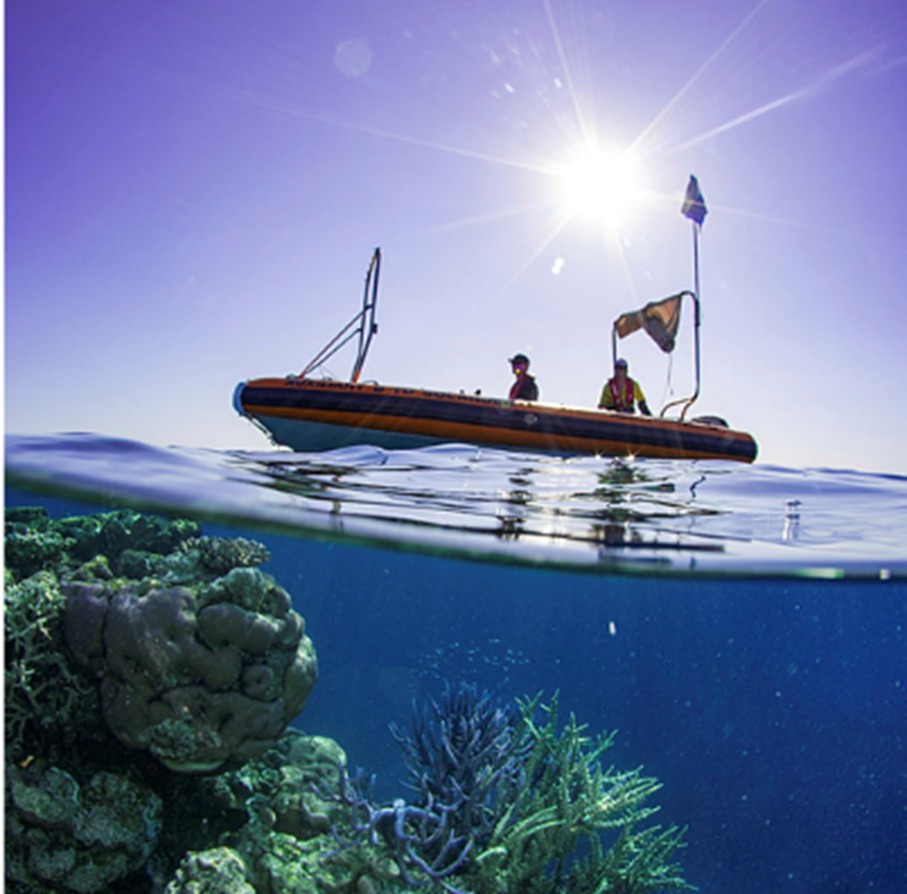Research on Scott Reef off Northwest Australia has shown that local coral connections help boost the resilience of remote atoll reef systems following bleaching and storms.
Coral reefs are facing well-documented threats from climate change including catastrophic bleaching events and increasingly severe storms. Isolated atolls are particularly susceptible to cumulative impacts as they lack the connectivity to other reefs in the region that could provide new corals and aid recovery.
However, a new study led by oceanographers from the Australian Institute of Marine Science (AIMS) suggests communities within these isolated reefs may be more resilient than previously thought, due to the extent of larval exchange across the reef system.
If sufficient numbers of survivors remain in patches across the reef system, and local conditions are right, communities can aid each other's recovery within a matter of years, even after multiple disturbances.
The research, based on extensive modelling of currents and other oceanographic variables, shows how important targeted local management actions can be in preserving and rehabilitating isolated coral reefs.

"We know that communities connected across the reef system that receive high numbers of larvae from multiple sources can recover more rapidly from disturbances than less well-connected systems," Dr Camille Grimaldi, an AIMS Research Scientist, said.
"Most previous studies have focused on the effects of large-scale connectivity among neighbouring reefs, rather than fine-scale activity within individual systems.
"Our study shows that the internal dynamics of a reef system play a key role and influence how effectively a reef can self-seed and recover from disturbances."
The study, reported in a paper published in the journal Limnology and Oceanography, investigated the Scott system of reefs, an isolated group of three coral atolls 300 km off the northwest coast of Australia.
The reefs have been exposed to multiple disturbances over the past decade but have shown surprising resilience.
A survey in 2024, for example, showed that eight years after the last major bleaching event in 2016, coral cover is beginning to bounce back. A similar level of recovery was evident following the mass bleaching in 1998.
"Given the reefs' isolation, we know they receive a negligible larval supply from the nearest reefs 300 km away, so we wanted to understand how communities distributed across the reef system may aid each other's recovery," Dr Grimaldi said.
The study modelled the role of potential local connectivity over 21 years of annual coral spawning.
The scientists found that around half of the coral reef larvae dispersal remains local - between 100 metres to tens of kilometres from the release location.
The remaining half of the larvae travel away from the reef system into open ocean.

"We found that local-scale dispersal of coral larvae helps form a well-connected reef network, which in turn boosts larval exchange within reef patches and between different reef zones such as lagoons and reef flats," Dr Grimaldi said.
"That bolsters the reef's resilience by helping withstand environmental stressors such as heat-induced mortality."
Reef ecologist Dr James Gilmour, based at AIMS Research Office in Perth, and an author of the paper, said that, without considering the effects of local dynamics, there is a poor understanding of mechanisms underlying the recovery of the system overall.
"But we have shown that reef systems that benefit from dispersal mechanisms that connect many different coral communities may have an enhanced likelihood of recovery following disturbances,"
The theme from the study, he says, is that local conditions are worth addressing.
"Enhancing and preserving local connectivity can have a substantial impact on the overall health and resilience of isolated reef ecosystems," he said.
This research was funded by AIMS and Woodside Energy Ltd as Operator for and on behalf of the Browse Joint Venture (BJV).
The research was a collaboration between AIMS, The University of Western Australia (UWA), The Coral Reef Alliance and the UWA Oceans Institute.






